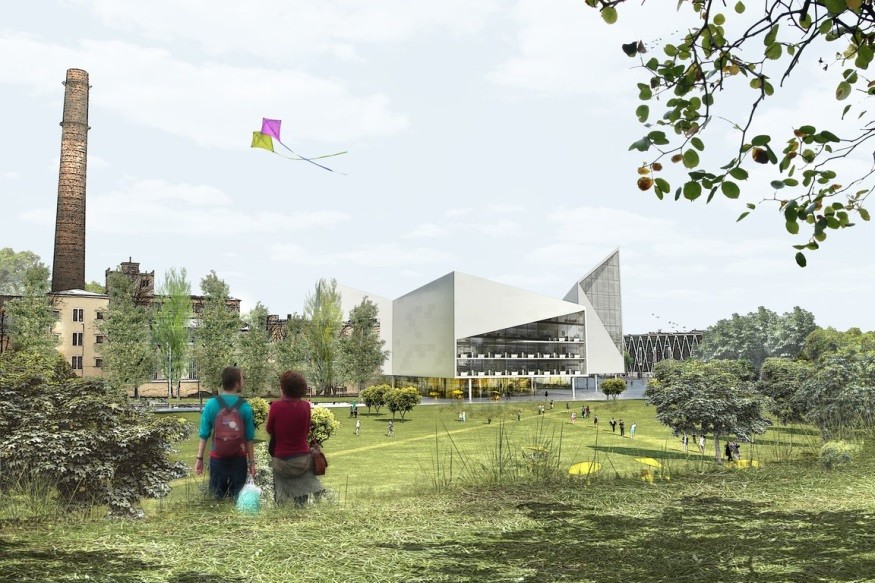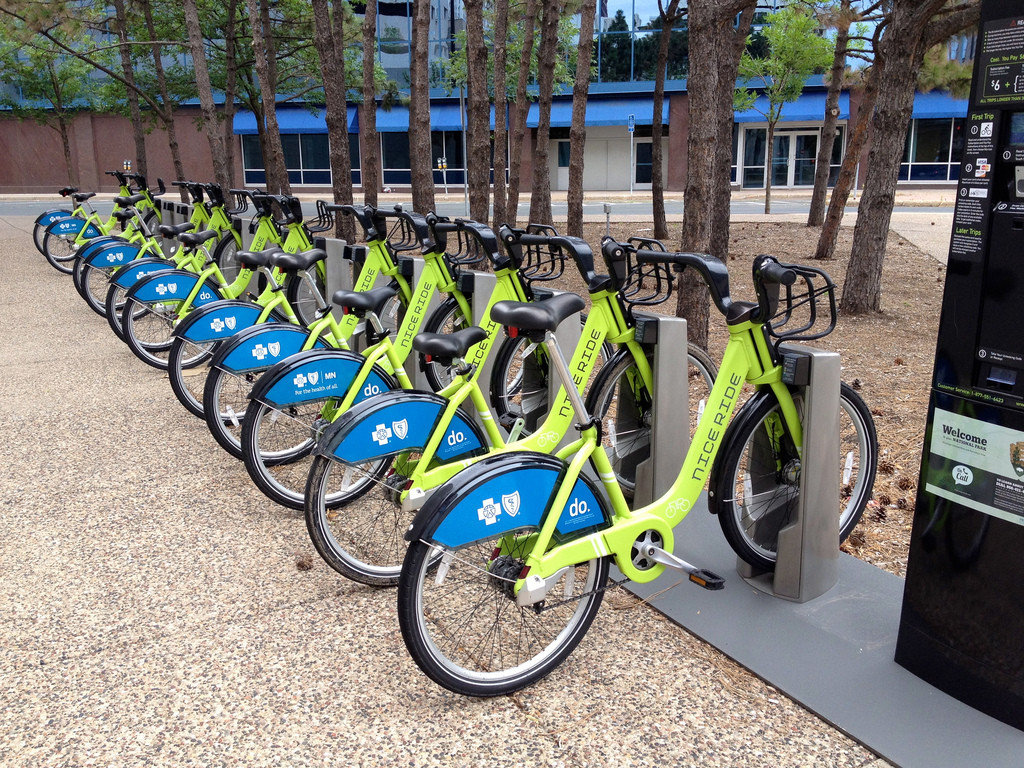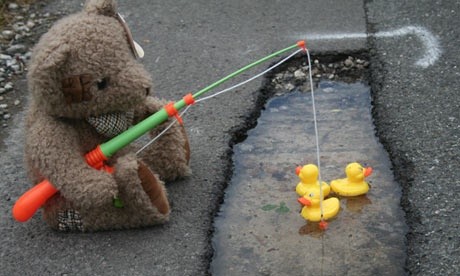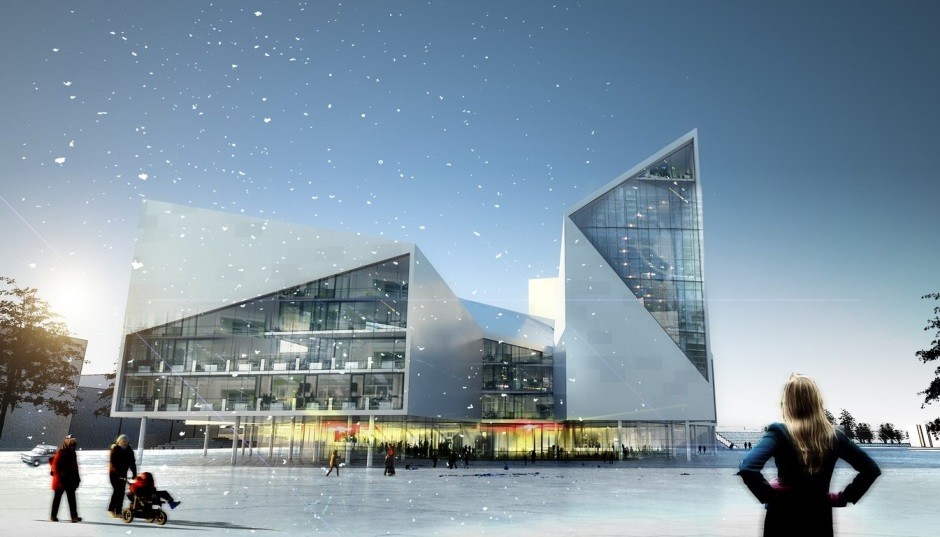I think Estonia is awesome. I came here for the first time in 2004 and fell in love with it. But no place is perfect, and neither is Tallinn. After living here for a while, I feel like there are aspects of city life that can easily be improved. With this article my aim is to help Tallinn become a hub for all the cool people.
This article was first published in Medium.com
Estonia has been recently promoting itself as a good place for international talent to come and work. At the same time, there’s been a lot of debate going on about the fate of such a small country once the floodgates open and lots of foreigners come rushing in. Even though the two are not connected, for many people a foreigner is a foreigner, no matter if they’re fleeing genocide in Africa or wanting to start their own company in a tax-friendly place.
I was invited to share my story with that project and here’s my small contribution to the ongoing campaign to attract people to come and work in Estonia.
Now, I would really love to see Estonia, and, in particular, Tallinn, to be transformed into a more cosmopolitan world capital. So here’s a list of things I think need to be done in order for Tallinn to truly become a world city.
1. City run bicycle sharing program
Seriously, Vilnius has it, Riga has it, all major European capitals have it. It’s just one of those infrastructures that we have come to expect of a modern city. And it’s not like we can use the weather as an excuse. Just look at the adoption of bicycles in Helsinki or Stockholm, cities with a similar climate and geography. Tallinn, as well as most of Estonia, is pretty much flat. There’s one or two hills and that’s about it. Cycling should be easy and effortless, instead it’s cumbersome and most of the time you’re almost forced to use your bicycle on the sidewalk for fear of getting hit by a car.
Most implementations of this type of programs are city run, and come with the backing of some big outdoor advertising companies, like JCDecaux. Just like the bus and tram stops were redone in cooperation with these companies, I’m sure they would be on board for a bike sharing programme with advertising tagged along.
While you’re at it, why not improve the existing bike paths and implement a few more. It would make life easier for those using bikes, and make Tallinn slightly more pedestrian friendly (I’m looking at you, Narva street between Viru square and Tallinn University).
2. More flight connections from the airport
Most foreigners living and doing business here quickly come to realise how hard it is to reach Tallinn from pretty much anywhere. And just how complicated it gets to go on a city break or a business trip without having to take at least two flights and basically waste a whole day travelling.
Now, I understand it is not that simple to get more flight connections to Tallinn airport. There’s fierce competition in the Baltic market and Helsinki is just a short 30 minute flight away and two hours by boat. I once had the privilege of meeting with airport officials and they told me that they were unwilling to lower their standard fees for low cost companies to flood the market. That is a very economically sound decision, but leaves the door open for Riga to take the lead in connections to the Baltics. Of course we could have a whole discussion on the merits of Air Baltic’s current strategy vs Estonian Air’s, but the reality is that Tallinn is underserved when it comes to flight connections to most of Europe.
Just do a simple Google Search “direct flights from Tallinn” and you get 34 cities, compare that with Riga (74) and Helsinki (97). Riga has twice more connections.
And it’s not even the number of connections that matters most. I think frequency of flights to main cities is far more important. Having three-four flights per day instead of one flight per week makes more of an impact. It allows you to better schedule your flights.
While we’re at it, why not make the train to Riga a reality, and finally abandon the ridiculous project to make train to Helsinki with a tunnel.
3. Fix the damn roads! (And sidewalks)
Maybe we need a campaign to start drawing penises on street holes to get more attention to the problem. Maybe we need to start drawing Edgar Savisaar’s face. But something has to be done. Every spring it’s the same thing. The snow and ice melt and we’re left with potholes on city streets.
I get it. Winter is harsh, cars need studded tyres and that damages the roads. But I can’t understand how come Sweden, Finland and the rest of the Nordic countries manage to get by with equally harsh winters and (almost) impeccable roads. Isn’t it more costly to have to fix the roads and the cars every year? Just spend the money already and get good quality roads.
And it’s not just about the roads. It’s about sidewalks too. In most European capitals you’ll see that sidewalks are well kept. The streets are walkable, even for people with strollers or wheelchairs. It makes a world of difference when you’re walking in a new city and you notice little flaws on the sidewalk, or how suddenly you’re left in a place where there’s no way to cross the street and the sidewalk just ends. Sidewalks, urban green areas, bus stops, all of those public city infrastructures need to be well kept, to give the city a look of modernity and also of cleanliness. The dirtier the city is, the more likely it is that people will thrown garbage on the ground.
Oh, and if you’re redoing sidewalks, try to move away from just filling them with asphalt. That’s ugly, dark and cheap.
4. Better housing options for mid-income workers
So, this one is gonna take some explaining. But I’ve lived here long enough to have seen many different types of housing options in the capital city. For anyone coming from abroad you basically get four options.
- You can live in the old town
- You can live in the “city centre”
- You can live in the hip district of Kalamaja
- You can live in the suburbs
The old town gets old pretty quickly. It’s nearly impossible to find affordable accommodation in a quiet area, and in the summer, the whole place becomes this tiny version of Disneyland for grownups who show up on guided tours on the cruise ships that dock for the day. If that’s not enough, hordes of drunken tourists still pick Tallinn for their stag parties and leave their filth all over the place. That’s not what I would consider quality of life.
City centre is actually a pretty disperse area with many different types of accommodation, but one thing they almost all have in common is the fact that none of the buildings are new.
Kalamaja is hyper-inflated and the housing quality varies greatly. The quality life you get there is pretty good, with mostly quiet streets, green areas and walkable streets. There’s enough selection of small shops and artsy cafes.
Of course you can always relocate to one of the “suburbs” like Mustamäe, Lasnamäe or Nõmme, but the first one only makes sense if you’re doing business or working near TTU or Technopol. And the last two are too far from the centre.
What is missing is a district that offers quality housing, with rent affordable places and good connections to the city center. Kopli? Ülemiste area? It shouldn’t be to far from the city centre, and should be served by tram. It should be more than just a new building, and it should have enough green areas and still feel cosy. And it shouldn’t be too expensive. Too much to ask?
5. Art and life outside of #estonianmafia
There must be life outside of the #estonianmafia IT and web infused start-up scene. There must be more offerings for artists, scientists and other types. Otherwise it becomes a bubble (not in the sense that it might burst, but in the sense that it lives isolated from the rest of society). Of course this is much easier said than done. And it would be awesome if somehow magically we would get a research centre from the EU or Facebook or Google to do stuff outside the basic scope of starting yet another web company.
Tallinn can also start to attract avant-garde artists who are at the forefront of modern art and might blend their art with some of the tech stuff we see.
Speaking of art, it would be awesome if Tallinn had one or two bold architectural buildings that would serve as landmarks that people would be amazed to look at. Something that would be worth mentioning and visiting in its own right. These projects, while expensive, are also what make a city alive. The space is limited in the city center, why fill it up with boring buildings and statues? Check out the amazing talk by Bjarke Ingels about a project for the new city hall for Tallinn.
6. Food? Squares? Eating out? Ordering and free delivery
No, I am not gonna complain about the food. I’ve lived here long enough to get used to it. And to be honest, the variety and the quality has really improved in the past five years. There are more and more places opening with a modern touch to lunch menus than before. What I miss is the possibility to just grab something to eat and come out to a square or a public space and sit down and eat it. I’m sure the weather can invariably be used as an excuse for the lack of public outdoor spaces (with the notable exception of Vabaduse väljak).
And for those times when you don’t want to go anywhere and just want food to be brought to your door, there should be cheap (if not free) food delivery like in most civilized places! In many big cities the competition is so fierce that you get a free Coke with an order of pizza, not to mention you also get free delivery. In Tallinn it can cost up to €5 to get food delivered to your door. Restaurants need to acknowledge there is a market out there for this. And this saves them money in the long run, since these customers won’t take up precious space in their establishments. They are paying full price for the food without the “service” of taking up space. Win-win?
7. Service industry
No, this isn’t about the perceived lack of friendliness in service establishments. It isn’t about how every time you walk into a store the employee behind the counter looks upset that you’re there to interrupt them while they were browsing Instagram. It almost feels like they are doing their customers a favor for existing. Getting service at a table in a Tallinn restaurant is almost as rare as a polite BMW driver.
The best way to scare a salesperson in Estonia is to just run up to them and say: “What is your return policy on this item?” They’ll have no idea what you’re talking about.
I’m talking about all the kinds of services that big cities provide. Hairdressers, car cleaning services, plumbing, electricians, house maids, babysitters, private tutors.
First, there is a lack of general awareness of some of these services among a lot of the Estonian population. “Why would I pay someone to fix my pipes? That’s a man’s job. I can do that” can easily be turned into “why would I pay someone to fix the wires at my place? I’ll just do it myself” which can have more adverse consequences. The same thing can be said about folding your own shirts, cleaning up your own place or redecorating your place. A modern city has all these services available for modest prices that most of its citizens can afford and do use.
8. Services in English. (And classes for Estonian.)
So, this is the part of the list where I come looking like one of those arrogant foreigners who refuses to learn the language and demands that everything is in his own language. But I’m actually not, and I think that learning Estonian (at least to some basic degree) is important.
But for better or worse, English has become the lingua franca of the world – not just the business world – the whole world.
And while the Estonian public sector has done an admirable work on their websites and digital properties, there’s still work to be done in the health sector, banking, consulting and legal sectors. If we do expect an avalanche of foreign workers to come and settle down in Estonia, we need to set up real services, not just digitally, that are able to address the needs of people in English.
And the recent initiative of the Estonian government to give free lessons at different levels to foreigners who are learning Estonian is to be applauded and publicized.
9. People need to be less averse to foreigners
I’m actually quite privileged because I come from an European Union country, and for us, life here is pretty simple and easy. You land, you register yourself, you get an ID card, and you’re set. But for those coming from outside the EU, it’s a bit harder. I’m also lucky because I work in a very open minded industry and am surrounded with welcoming people. But I’ve read discussion forums online, and in general there’s this sense that Estonians might be “less warm” to foreigners.
After having lived here for more than five years, I still get asked, “Why would you move here”. And I can mostly tell that it’s not in a genuine interest to know the reasons I’m here. It’s mostly out of bemused confusion as in, “Why would anyone want to come here, when everyone here is looking to get out”. The reality is that the grass is always greener on the other side, and there will always be people around the globe who are looking for a nice place to live, and they want to give Tallinn a chance. Let’s give them a chance too.
10. Live up to the hype
It’s not actually something that needs to be changed or improved, it’s just something that we need to be aware of. Estonia is being hyped, that raises a lot of expectations. And if I’ve learned something in my life is that once expectations are high, you better deliver, otherwise there will be disappointment. The picture being painted at the moment makes Tallinn look like some liberal ultra modern utopia. And that’s not (yet) the reality. We need to realise that, keep working hard to achieve it. And at the same time keep attracting the kind of people who will help us build it.
Together.
I











Yes on point 2. especially flights from and to Switzerland 🙂
All these problems can be solved by bringing Portugal with You to Estonia. Including climate of course.
It’s come a long long long way from 1990. I lived there until 2009. Believe me, it has improved vastly. Everything takes time but your suggestions are valid. I was hit by a car in the late 1990s. The driver was caught but never punished. So, I would definitely go for improved driver-pedestrian rapport. More bike routes and sidewalks would help too. At least drivers are stopping at crosswalks more often. It was so bad at one point people put black ribbons on their car antennas and billboards were put up to remind people to stop.
I agree wholeheartedly that it has indeed come a long way from 1990. And I’ve personally seen some of that improvement myself. Regarding road safety and speeding, and drunk driving, I think things have gotten better, but as always there is room for improvement. Sorry to hear about your accident, hope nothing serious came of it
I agree with point 9. Estonians are terribly xenophobic. I think it’s partially a hangover from the years of Russian occupation. Coupled with this there is an underlying permeating tone of homophobia that is gaining in virulence as legislators attempt to modernize societal norms like the concept of family and marriage.
I also agree with point 7. Service in Estonia is wildly uneven in stores and restaurants which can be frustrating. As for point 10, I think President Ilves has been flogging the hype of IT Estonia out of all proportion leading me to suspect that much of it is smoke and mirrors and he needs an easy legacy issue to divert attention from his unremarkable term of office.
I have never lived in Estonia but have visited regularly since 1980. I would probably visit more often if there were better airline connections. Over the years I have found it remarkable how many Estonians are fluent in English so I sense no problem there. I have lived most of my life in Canada which is a multicultural bilingual country. As a consequence I am quite fluent in French and English. Over the years I have come to view Estonia also as a bilingual country due to the enormous Russian minority that lives there. In fact there are entire parts of the country you would be hard pressed to get by with anything other than Russian. This prompted me some years back to study Russian at the University of Toronto as I find it hard to imagine anyone not having a rudimentary grasp of Russian spending any serious time in the country let alone living there. It just makes practical sense.
I wanted to comment about your views about Russian. I live in Tallinn and I don’t speak any Russian because I live in Estonia. Russians in Estonia are (mostly illegal) immigrants, so they are obligated to learn and speak Estonian when they’re doing business. Don’t get me wrong, I don’t hate Russians, I have forgiven them horrible and bloody things they’ve done to us, but when they or immigrants from other countries live in Estonia, then they should be capable of speaking in Estonian. Younger generation of Russians actually speak very decent Estonian so in 15-20 years Estonia should see the decrease of Russian speaking population anyways.
Or you can go and fuck yourself with rake mybe ? Specially about that lingua franca idea.
I agree with most of the things you say, these are indeed good traits of well living cities in the world. However, the huge wall in Estonia is the fact that the nation is as poor as the government. It will take a lot of time and money to improve those things as the focus is on other things right now. Unfortunately…
The roads yes! I don’t understand why they’re still not fixed! It makes Tallinn’s city centre look shabby! Estonia – the high tech country that can’t even adequately maintain its roads!.
I think it’s great that Estonia is even at that level of being criticisable. If someone would have made this critique 15 years ago, it would have been so unfair because all Estonians know the country is poor and people are miserable. But we’re finally getting to a point where Estonia is comparable to other EU countries. Which means we’re no longer treated like the poor ex-Soviet country but a legitimate equal. Which is why it feels good to read about Joao’s points, it shows Estonia’s getting closer to where it set sail in 1990.
Absolutely agree. When I first moved in, there was much to be criticised, but indeed it would’ve been unfair. I really believe that Estonia (and especially Tallinn) has come of age, and can now stand to be judged and compared on its own merits, without having to make any excuses related with the past. Tallinn can compete for talent with other European capitals, therefore it should be compared at the same level.
It is a testament to how far Estonia has come.
As someone who was forced out of the country of my birth when I was 2 & who has returned in 1970, 1974, 1986, 1990 and 2014 I take exception at some of the above criticisms. Estonia has worked tremendously hard to shrug off the disease of Soviet life & government. Well done, my country!!
Piret, I didn’t mean those as criticisms. I wrote that thinking of how Estonia can be even better. I wasn’t born here, I chose to live here. And I love it. I’m not here because I have to, I’m here because I want to. I admire Estonia’s advances and improvements in the past 20 years. Remarkable. There is too much to admire and like about Estonia (more than 10 points for sure). These were just some areas that could do better (in my humble opinion).
And as some commenter before said, I think it shows how much Estonia has improved that it can stand to be judged on its own merit, shoulder to shoulder with other European capitals.
Tallinn has come of age.
To the Author _ PLEASE LEAVE ESTONIA . It doesn’t want you , and was fine witout you. All ten of your points are terrible. 1) who pays for the bikes – you?? Tallinn has GREAT public transport, especially when considering the budget 2) Tallinn is only a fraction the size of those other cities, and directly connects to major hubs – but I guess you know ore than the airlines 3) the roads are great considering the low budget for them 4) earn more money and get a better place to stay 5) avant gard artists ruin every city they are in – you and Yoko stay away 6) sorry there is not enough 24 hour fast food for you 7) service in Estonia is improving every year 8) everyone under 40 here already speaks English – why don’t YOU learn Estonian – as you’ve had 10 years here – Lazy 9) people are friendly to foreigners – maybe they just don’t want trwendies like you ruining their country 10) Estonians are humble and don’t need to live up to your expectations to the author – please leave Tallinn and stop trying to ruin it – Estonia is GREAT just like it is
Duly noted Jaan. Now packing my bags. See you around, and good luck with being by yourself playing in the corner all alone 🙂
No, seriously,
1- Bike sharing programs are paid by the users and supported with advertising, just like the bus stops
2 – Tallinn has 400.000 inhabitants, I wouldn’t say that it’s small, Riga is comparable and has plenty more connections. Like I said in the article, it’s all about what strategy you want to pursue and how do you fund it. Estonia’s strategy was more rational (meaning not overspend). Riga’s strategy was more adventurous, let’s see if their gamble pays off, for now it seems it is paying off.
3- Yes, considering low budget roads are ok. Maybe let’s increase the budget for roads and decrease the budget for propaganda (i.e. Tallinn TV)
4- Thanks. Will do
5- I’ll let Yoko know
6- It’s not so much about the 24h fast food (i’m too old for that) but it’s more about having more options for ordering food
7 – Agree, it’s improving.
8- It’s not about those already here for a long time, it’s about those who are about to arrive
9- I’ll take that as a compliment
10- Estonia is Great. Can we make it better?
Constructive criticism is always welcome. Well done.
Oh Jaan, what a perfect example of bitterness, stagnation and pointless hatred! Did you really feel better about yourself when you pooped all over this post!? I bet not! Maybe you can do us (fellow Estonians) a favor and get over yourself! I understand, you get all protective when a foreigner dares to say that Estonia isn’t a perfect country, but probably criticize it in other sites yourself! Now tell me, what good is that doing to anyone? The author at least made some great points to improve something! Something which you could do by channeling your negative energy and anger into sport or something, so you could be better person and we would have better Estonia! 🙂 And I mean it the nicest way possible 🙂
FUCK U!
Some interesting points…. No.1, to be honest not really that important, public transport is pretty amazing here and as for tourists, most don’t venture much further than Kalamaja, if at all, so I can’t see where these bike hubs would be. No.3 you have a point, but I doubt many of us understand the budget system that can allow this to happen. No.4 Property is pretty cheap here, and i certainly wouldn’t want modern apartment buildings springing up around (old) kesklinn buildings as you put it. The rest will change over time, but as for the language issues, most people under 40 speak pretty good English, in fact its because of that that its been harder to practice my Estonian 🙂
Hey Stephen,
About #1. I would like to think that the majority of the users would be locals. It is hard to estimate how many would use it, and where best to locate the hubs, but I’m guessing that the best approach would be smaller and more frequent hubs would be key. Perhaps start a discussion with Riga / Vilnius to see how their experiment is going.
About #4 property used to be cheap, it’s getting more expensive (still ok), and my point is not that we should re-do kesklinn and certainly not vanalinn. My point is that if indeed we want a huge influx of top talent, we need to think “where will these people live” and realise that we might need to improve Kopli area just like we did with Kalamaja.
I understand your point, but with cycling season so short here and with free transport plus limited cycle paths, I just can’t see it working at present. It’s certainly not something that would make top talent move here and if they did they’d probably have the cash to buy their own.
Kopli I’m sure will get further developed at some point, used to live there myself much to the amusement of friends, but will it be the affordable property we’re looking for if its just an extension to what has happened in Kalamaja.
On the topic of the roads, one has to factor in geology. Helsinki and Stockholm are built on granite stone. But in all of Estonia there is only limestone to be used for road construction. Since limestone dissolves it is actually bad for building roads with but there just isn’t anything else to use.
That of course doesn’t mean I like the roads, they’re a nightmare, but I have a bit of understanding for the state of affairs.
About the services…the locals would not use them, cause in addition to the “a real man can fix it himself” mentality, there always is someone who can fix it among your relatives and friends or you really are able yourself. Plus people are too poor for these services. And actually, ALL the services you mentioned totally exist, so cant really understand the problem. And there will never be as many outside hangout places in est as in portugal..read: the weather.
as a foreigner, If I would like to find jobs in Estonia, where do I start my search? I have a lot of talented individuals and individuals I know who can do unskilled work as well. If there are any leads please do share. Thank you